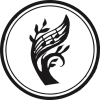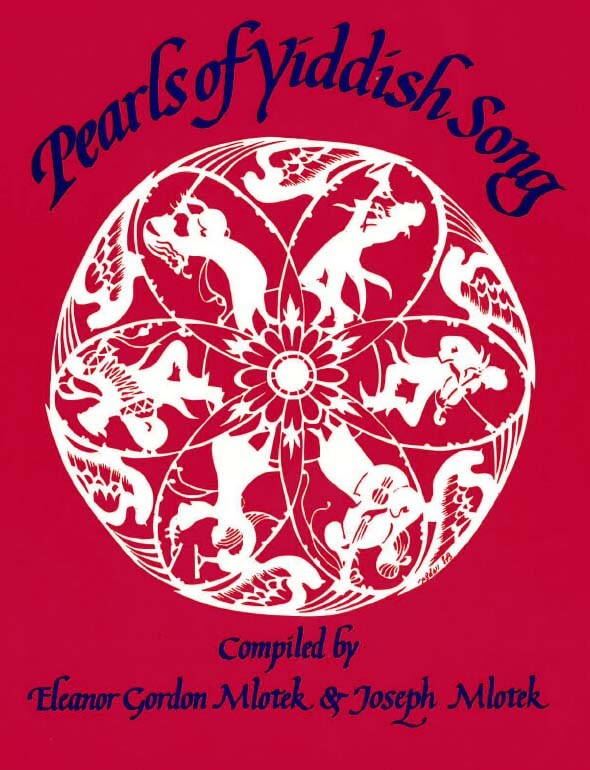Words by Yiddish writer Yitskhok Leybush Peretz (1852-1915); music by Eliyohu Hirshin (1876-1960). Published in Warsaw in the Ilustrirte vokh, No. 16, April 25, 1924. The last lines differ from Peretz’s original which were: “Es vet shaynen, shmekn, zingen,/ Un oyf undzer keyver oykh” (there will be light, fragrance, singing — on our graves as well).
In his poem, “Di lererin Mire” (Mire, the teacher), Abraham Sutzkever describes how the song was sung in the Vilna Ghetto: “Shoyn klingt es: ‘Nit vayt is der friling.’/ Nor untn, di hek un bagnetn tsetreyslen di gruntn,/ Me shlept far di hor fun di kelers un lekher,/ ‘Nit vayt is der friling’ farklingt ober hekher. ” (You can hear the words [of the children singing): “‘Spring is not far off.” But below hatchets and bayonets make the earth tremble. People are dragged by their hair from cellars and holes. ‘Spring is not far off resounds even louder.”)

Hope, hope, hope.
Spring is not far off.
Butterflies will leap,
In new nests, new birds
will sing new songs.
Have faith, the night has disappeared
and the clouds have scattered, too.
It will be blue, the sky will be blue
with new stars and new suns.
New roses, new blossoms
will bloom and grow tall.
There will be light, fragrance and song,
even here among us.
Hof, hof, hof,
Nit vayt iz shoyn der friling.
Es veln shmeterlingen shpringen,
Naye nestn, naye feygl
Veln naye lider zingen.
Gleyb, di nakht iz shoyn farshvundn,
Un di volkns oykh tserunen,
Bloy vet zayn, vet zayn der himl,
Naye shtern, naye zunen.
Naye royzn, naye blumen
Veln blien, vaksn hoykh.
Es vet shaynen, shmekn, zingen,
Un in undzer vinkl oykh.
האָף, האָף, האָף,
ניט װײַט איז שױן דער פֿרילינג.
עס װעלן שמעטערלינגען שפּרינגען,
נײַע נעסטן, נײַע פֿײגל
װעלן נײַע לידער זינגען.
גלײב, די נאַכט איז שױן פֿאַרשװוּנדן,
און די װאָלקנס אױך צערונען,
בלױ װעט זײַן, װעט זײַן דער הימל,
נײַע שטערן, נײַע זונען.
נײַע רױזן, נײַע בלומען
װעלן בליִען, װאַקסן הױך.
עס װעט שײַנען, שמעקן, זינגען,
און אין אונדזער װינקל אױך.
Song Title: Hof Un Gleyb

First published in 1988 as Pearls of Yiddish Song: Favorite Folk, Art and Theatre Songs, this anthology contains 115 songs. Some material had never been published, while others, included in rare song collections or sheet music, were largely inaccessible. The songs presented reflect Jewish life in Eastern Europe and the United States and depict childhood, love, family celebrations, poverty, work and struggle. There are also songs from the Hasidic and Maskilic movements, songs of Zion and of America, as well as songs from the Yiddish theater.
The title of this anthology derives from the weekly two-page feature column “Pearls of Yiddish Poetry,” which the compilers Yosl and Chana Mlotek initiated in 1970 in the Yiddish newspaper Der Forvertz (the Yiddish Daily Forward). Hundreds of readers from around the world — including authors, composers, singers, actors — became co-participants in this collective folk project and recalled melodies, lines, fragments, stanzas and their variants of songs, poems, and plays which they had heard in their youth. At first, readers sent in only written material. Later, they also taped songs on cassettes, many of whose melodies had, until then, never been recorded. They also identified and supplied missing information regarding lyricists, poets, and composers and described the circumstances surrounding the songs’ origins, their dissemination, diffusion and impact.